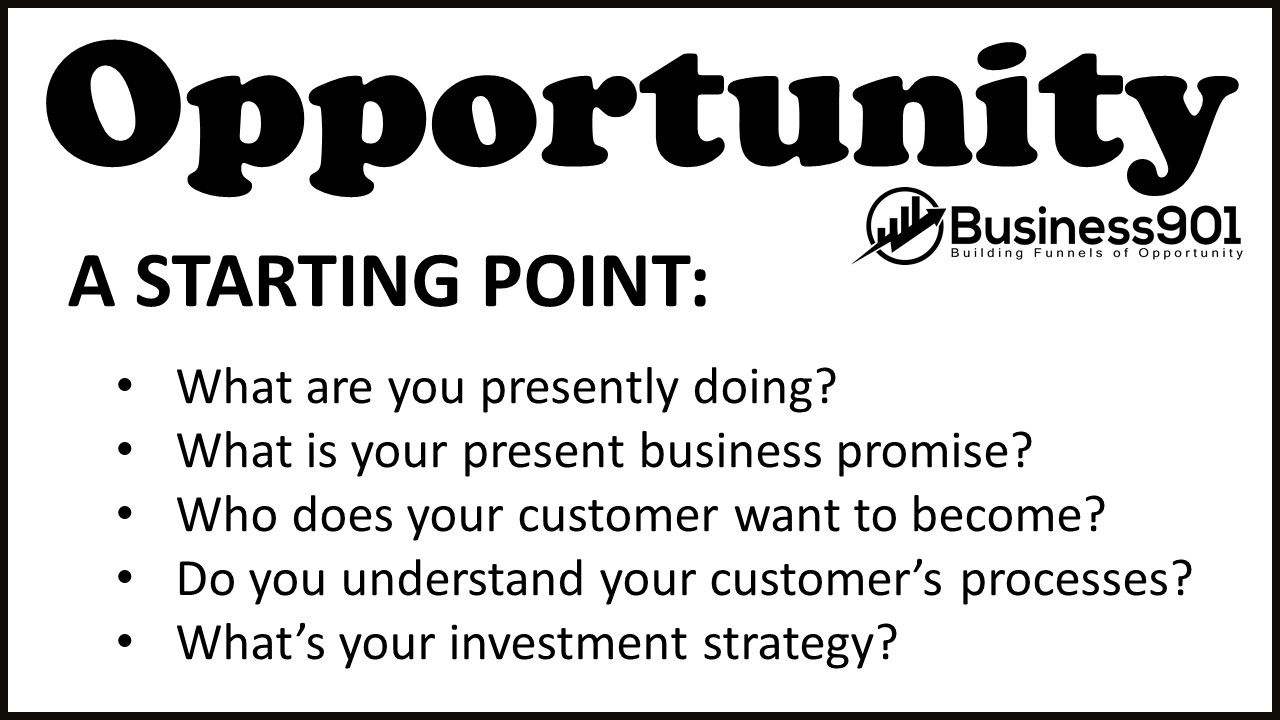When we start with our customers and their stories things begin to change. We create better relationships and a higher level of learning opportunities. Thus, we can communicate more effectively across with our customers and their markets, develop more business development opportunities and connect with influencers. You must be willing to dig deep to understand customers. It becomes all about engagement and building effective feedback loops. These loops become our method of learning. We use this learning to provide more value to our customers and participate with them at the relevant edges of the use of our products/services. Think about your MARKETING AS A NEVER ENDING STORY.
Most concentrate on building linear step by step plans. They think of gathering a large group of prospects and narrowing them down through some type of funnel and toward a prospective customer. I call that thinking a funnel of depletion. I think about processes that market towards opportunity. I believe the majority of customer insight, growth and revenue is a result of understanding your current customer base and influencers, call it the 5Rs of Growth (Re-Sell, Re-Gain, Retain, Renew, Refer).
Many people respond to the latest fad or solicit the cleverest idea to implement some sort of solution, thinking it will make them better. What makes your marketing better is understanding the user or customer experience and their processes. Then with hard work, take the time to figure out how to engage with them. It’s this process, that empowers you and which leads you to create better and more performing processes.
It is not about the tools you use it is about the conversations you create, stories that are shared. When you go to scale, most people look at putting more effort in the top of the funnel. The original sales funnel and still the one in general use today was developed by Elias St. Elmo Lewis in 1898. We appeal to as many people as we can and narrow them down to the point of sale. Not a bad run for any system. This was refined by the Fuller Brush people going door to door and refined even more by the next generation of cold-callers. It has even taken another step with the advent of digital and email marketing and social media. Which in turn has created an abundance of people selling systems.
This type of thinking limits your scalability. You might be surprised but super-targeting works. A past HBR article demonstrated that you grow 2X faster when you sell into micro-markets. Also, Craig Elias says “when you analyze your wins instead of your losses it makes you 10X more likely to understand the events that trigger decision makers to become motivated about buying your product or service.”
Conversion is a result of relevance. Relevance opens the doors to experiences that matter, surprise, and bring value to our prospects and customers. Starting that conversation, even on a website is determined by how relevant you are to that person. Relevance is the key to that door. Without it, you can’t experience the value that you have to offer. With it, your customer will enter. The power of relevance is not how connected you are to what they already know. The power is in the experiences that you offer… and how wonderful it feels to click and get what you do not know. (Adapted from The Art of Relevance)
This is the initial sequence of steps I use to get started in building a marketing story. It ensures we carefully think through what outcomes we want to create, what supports and barriers we need to plan for, and whom we have to involve within your organization to guarantee success.
A starting point from the Appreciative Inquiry folks:
- (Definition) What are you presently doing and how do your clients and organization feel about them?
- (Discovery) What is your present business promise for retaining customers? What is your present business promise for acquiring customers?
- (Dream) Who does your customer want to become? Who do you want to become?
- (Design) Do you understand your customer’s decision making process? For each product/market segment?
- (Destiny) What’s your investment strategy – not only in media but in time and events?
This is not a passive exercise. Within a few days, we are engaging with customers looking for clusters and adjacent customers to talk with. Conversations do not center on personas, link bait, and manipulation. You don’t change mindsets in an auto-responder. It is conversations about real people, moments, patterns, and opportunities. Said in another way, their stories. And if we listen to them, they seldom end.
You can find out more at Building a Funnel of Opportunity

